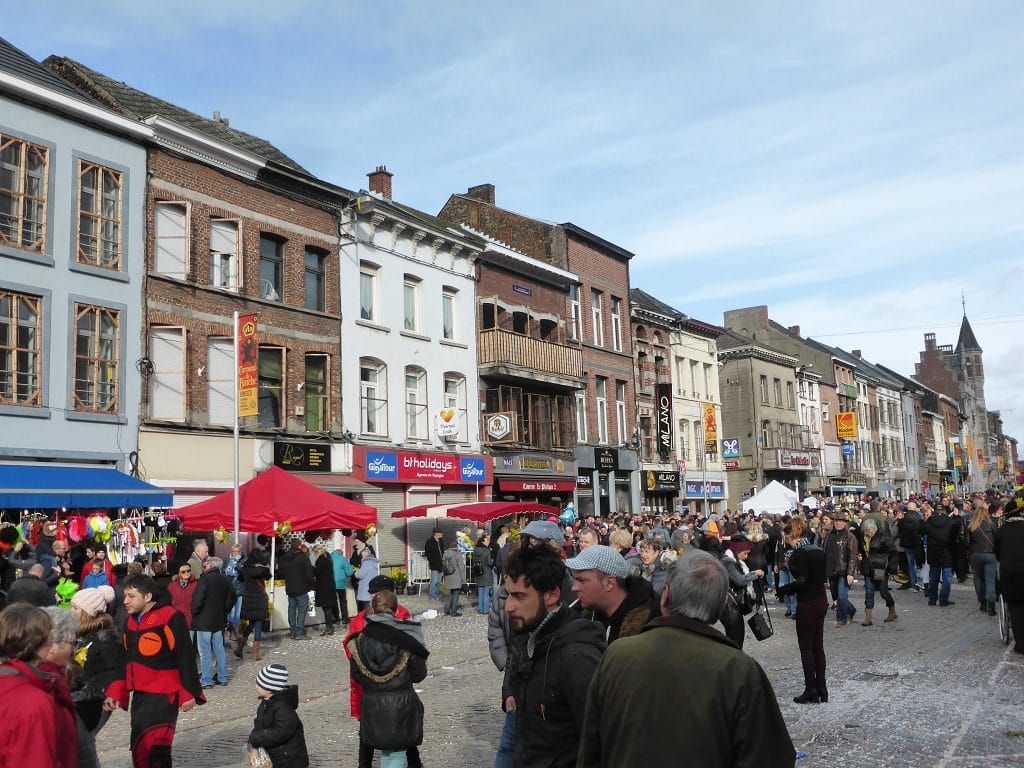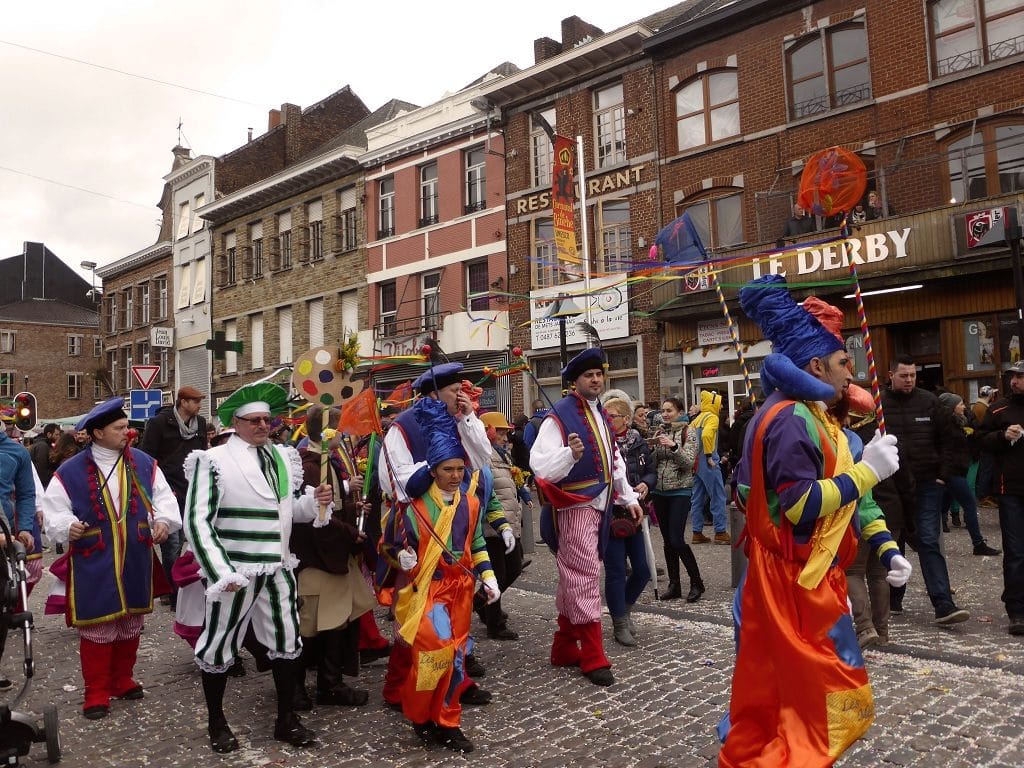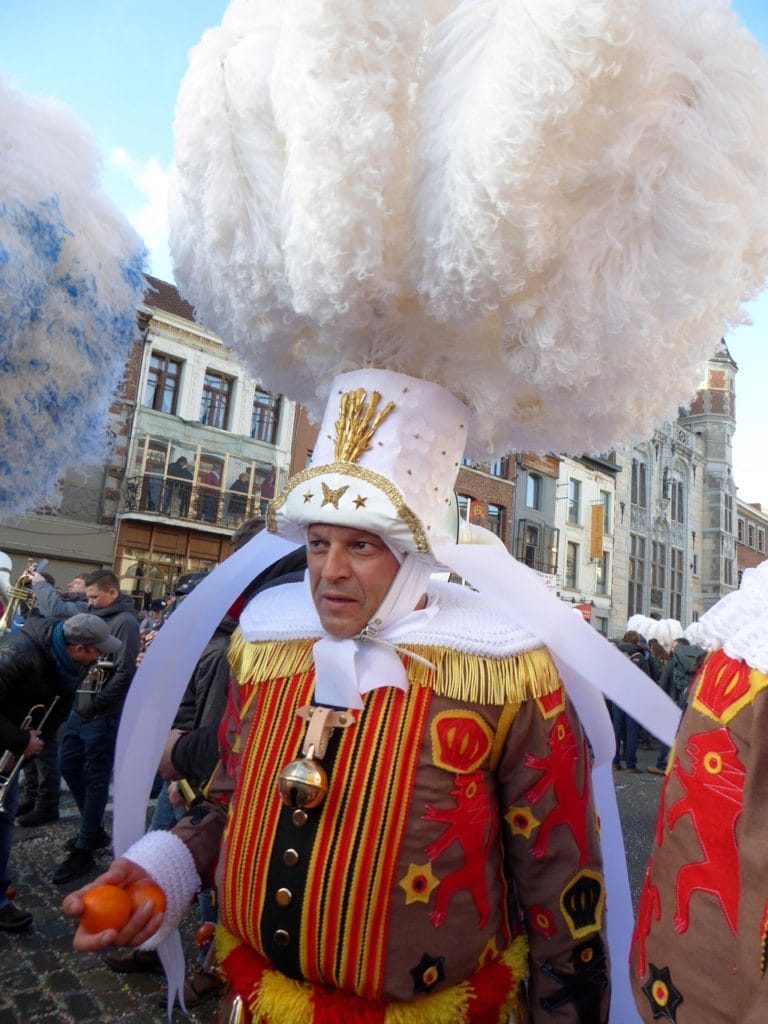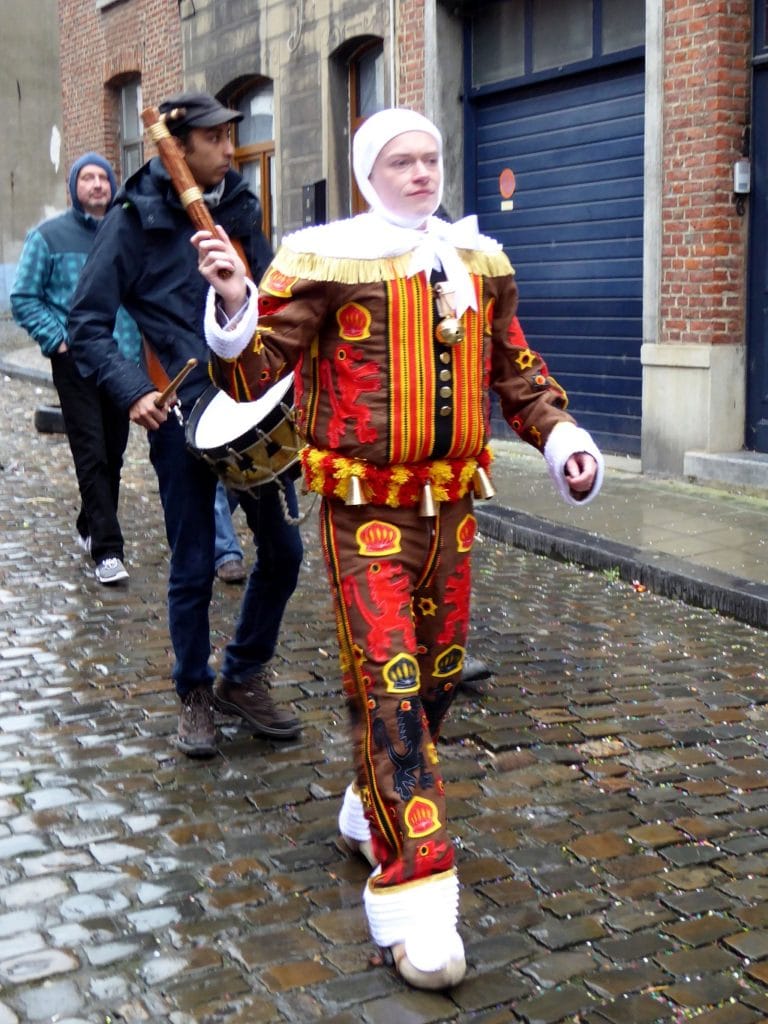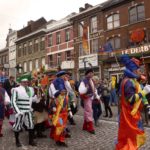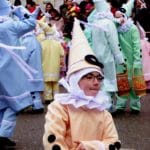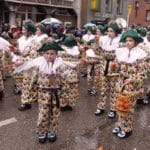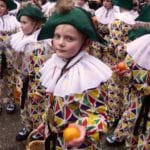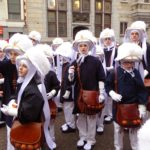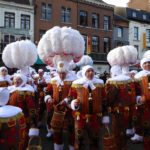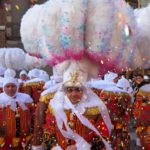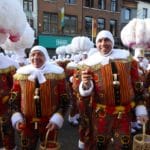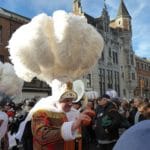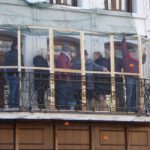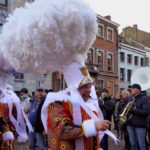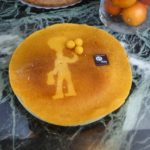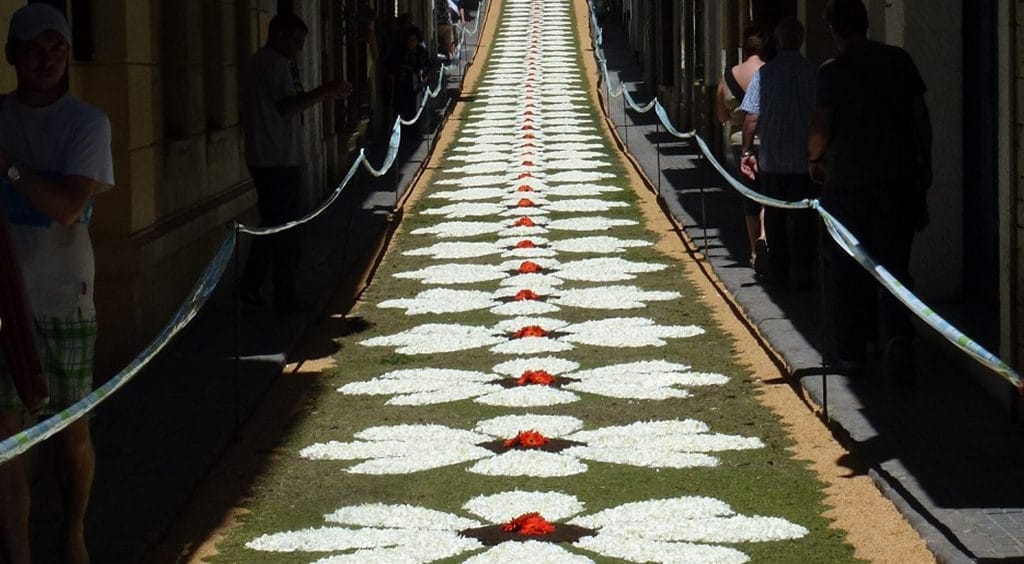The Carnival of Binche (Le Carnaval de Binche)
The main character of the event is Gille, rounded neckless figure in a suit stuffed with straw who clatters, stomps and throws oranges. In his very original costume, he can’t leave town, kiss his wife, smoke and use a cell phone.
Binche is a small city, about 60 km from Brussels, mostly famous for its carnival. In 2003, UNESCO proclaimed this unique event one of theMasterpieces of the Oral and Intangible Heritage of Humanity.
It is unclear and there is no evidence where the oldest figure Gille came from. He is a rounded neckless figure in a suit stuffed with straw who clatters, stomps and throws oranges.
There is a widely spread legend created in the 19th century by journalist Adolphe Delmée. According to this, when in 1549 Queen Maria of Spain organized a welcoming ceremony in honor of Emperor Charles V and his son Philip II, some Incas in the exotic, colorful costumes and feathered headdresses appeared in the parade. The inhabitants of Binche liked them so much; that they decided to organize a similar procession in their town.
This ungrounded fact amazed many, because it added to their feast a historical aspect, however, the reality is different. The first written mention of carnival dates back to the 14th century, but it is possible that it is older and comes from pagan rituals and shamanism. It is not certain where a strange heritage has come from, but it has gradually turned into a celebration of the end of winter.

